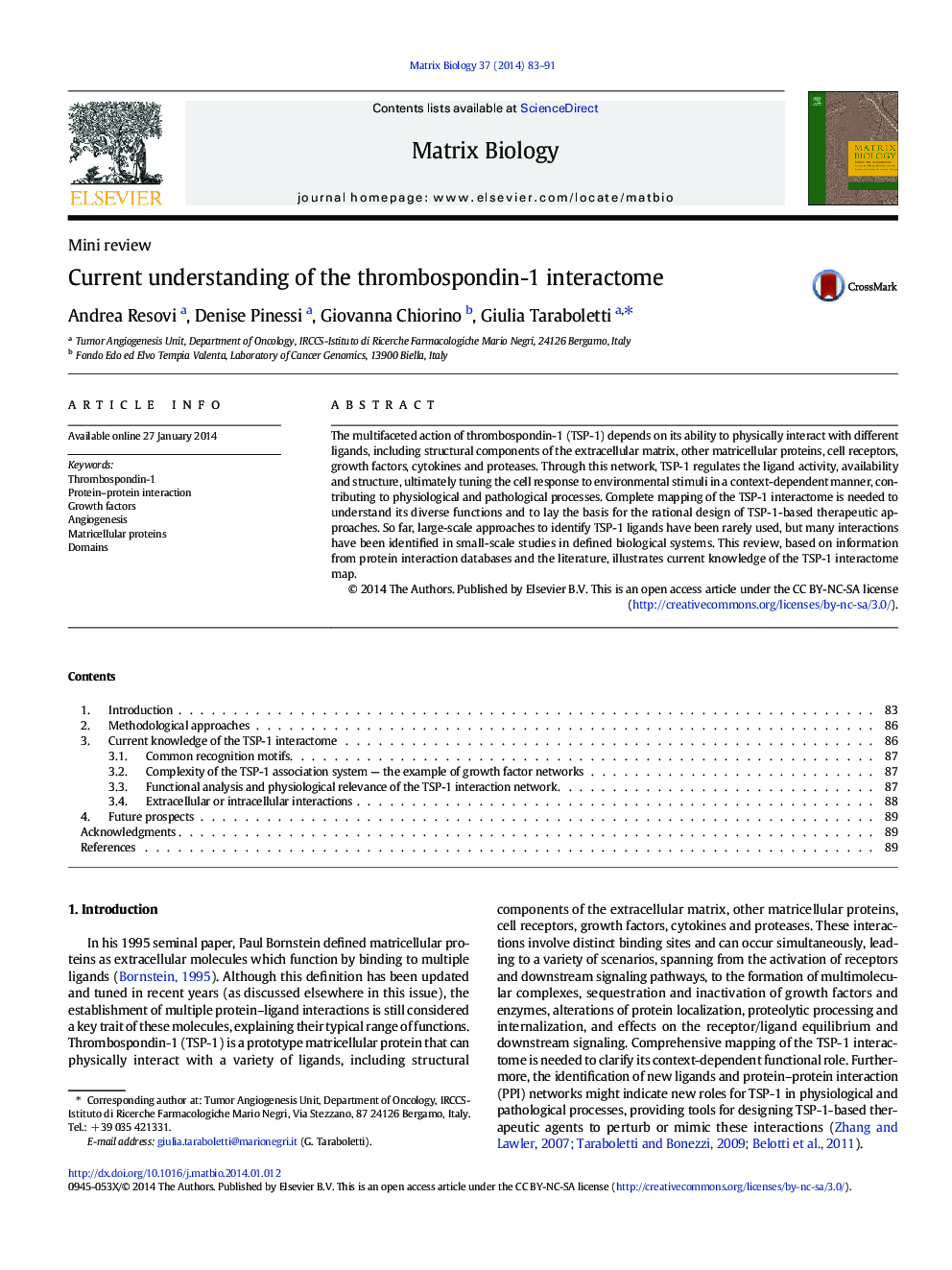| Article ID | Journal | Published Year | Pages | File Type |
|---|---|---|---|---|
| 2144784 | Matrix Biology | 2014 | 9 Pages |
•The complex activity of TSP-1 depends on its ability to bind to different ligands.•Analysis of interaction networks is needed to clarify TSP-1 context-dependent role.•This review illustrates current knowledge of the TSP-1 interactome map.
The multifaceted action of thrombospondin-1 (TSP-1) depends on its ability to physically interact with different ligands, including structural components of the extracellular matrix, other matricellular proteins, cell receptors, growth factors, cytokines and proteases. Through this network, TSP-1 regulates the ligand activity, availability and structure, ultimately tuning the cell response to environmental stimuli in a context-dependent manner, contributing to physiological and pathological processes. Complete mapping of the TSP-1 interactome is needed to understand its diverse functions and to lay the basis for the rational design of TSP-1-based therapeutic approaches. So far, large-scale approaches to identify TSP-1 ligands have been rarely used, but many interactions have been identified in small-scale studies in defined biological systems. This review, based on information from protein interaction databases and the literature, illustrates current knowledge of the TSP-1 interactome map.
